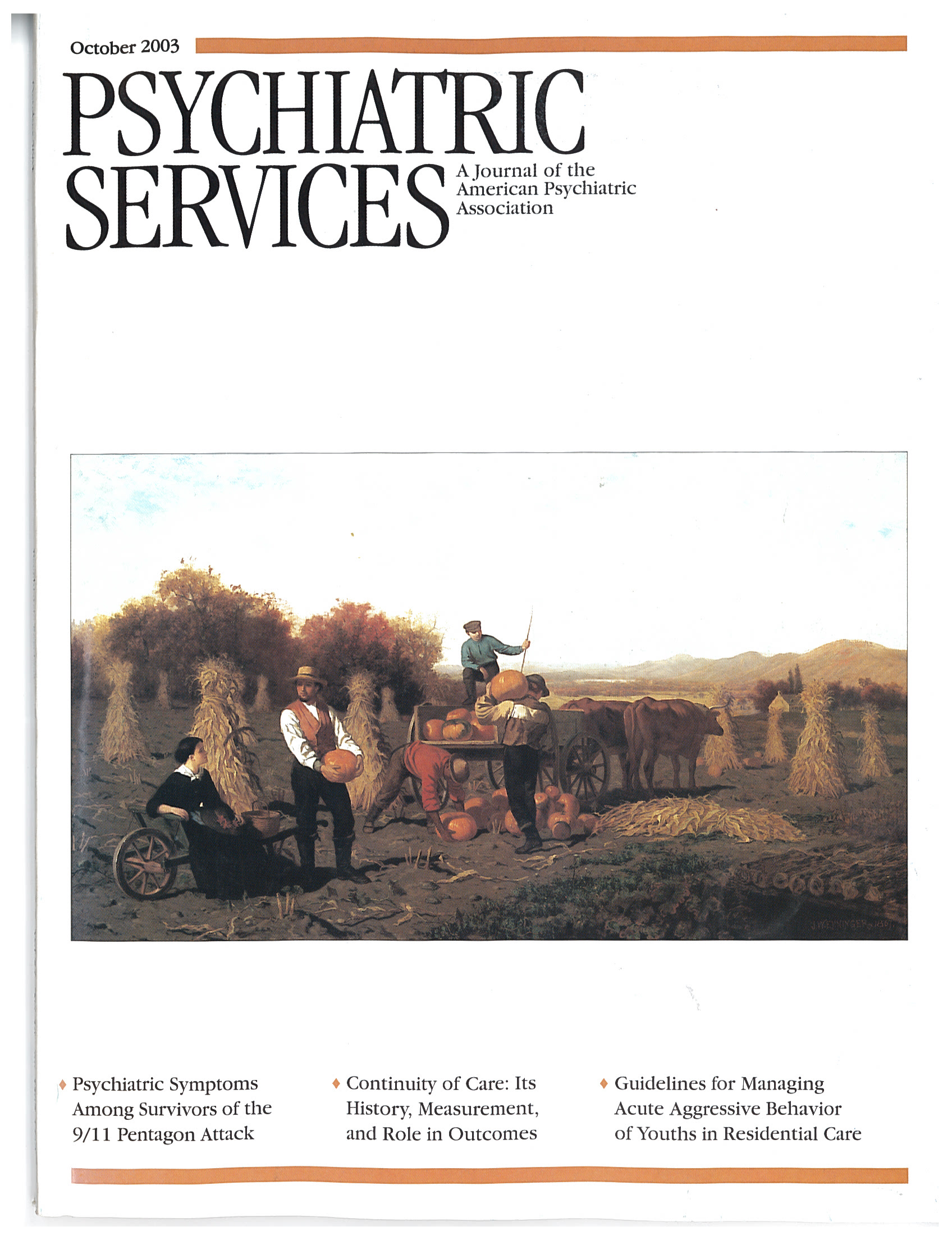Recognition and Treatment of Alcohol Use Disorders in U.S. Jails
To the Editor:Evidence for the high prevalence of substance use disorders in correctional settings is increasing (1,2,3). One report estimated that 80 percent of the 1.7 million adult Americans who are in correctional facilities have a history of involvement with drugs or alcohol (1). Alcohol intoxication is temporally related to several crimes, ranging from driving while intoxicated to assault and homicide, and it has been estimated that 40 percent of inmates in local jails and state prisons had consumed alcohol at the time of their offense (2,3).
Jails may provide unique opportunities for the assessment and treatment of alcohol use disorders. Recently arrested alcohol-dependent individuals may be intoxicated or in acute withdrawal. Newly incarcerated individuals may have various levels of problematic drinking. Alcohol screening instruments, such as the Alcohol Use Disorders Identification Test, can be useful in evaluating the severity of heavy drinking and in selecting appropriate interventions (4). Brief interventions can be effective in reducing alcohol consumption among nondependent heavy drinkers, particularly if coupled with a description of adverse consequences of drinking (4). The method consists of providing individual feedback on the negative effects of drinking, followed by advice to stop or reduce drinking. Inmates whose incarceration is clearly related to drinking may be more receptive to feedback on cause-and-effect implications of their alcoholism.
The management of inmates with established alcohol use disorders generally consists of detoxification followed by relapse prevention. Health care workers in jails need to recognize signs of intoxication and understand the course of various withdrawal syndromes and clinical factors that influence the course and severity of withdrawal.
Rehabilitation in jail settings presents unique problems. Rapid turnover and large numbers of antisocial participants may make it difficult to conduct group sessions. Alcoholics Anonymous (AA) slogans such as "Staying sober one day at a time" may need to be reinterpreted or cognitively rehearsed for future use. On the other hand, incarceration may have a protective effect on cravings and compulsions to use substances because of the limited availability of alcohol and drugs. In the jail setting, individuals may more readily recognize their lack of control over substance use, because they are experiencing a lack of control in the most basic activities of daily living.
Although incarceration may provide a period of "forced abstinence," alcoholics may experience considerable difficulties in sustaining abstinence once they are released into the community. Inmates preparing for discharge may benefit from "relapse prevention packages" that include cognitive, behavioral, or pharmacological strategies. Cognitive-behavioral therapy focuses on the identification of factors that promote drinking and the development of skills for dealing with high-risk scenarios. Cognitive-behavioral therapy can be augmented by the use of pharmacological therapies. For example, the opioid antagonist naltrexone may be useful in alcohol-dependent individuals in conjunction with probation or early release programs. Mobilization of community resources before inmates are discharged is essential.
The need to identify and treat substance use disorders in correctional settings has been recognized by the Center for Substance Abuse and Treatment (CSAT). Five of the CSAT Treatment Improvement Protocol monographs (numbers 7, 12, 17, 21, and 30) provide guidelines for screening for and treating these disorders in correctional settings (5).
Dr. Modesto-Lowe is affiliated with the department of psychiatry at the University of Connecticut School of Medicine in Farmington. Dr. Fritz is with Correctional Managed Care at the University of Connecticut in Hartford.
1. Belanko S: Behind Bars: Substance Abuse and America's Prison Population. New York, National Center on Addiction and Substance Abuse at Columbia University, 1998. Available at www.casacolumbia.org/usr_doc/5745.pdfGoogle Scholar
2. Greenfield LA: Alcohol and Crime: An Analysis of National Data on the Prevalence of Alcohol Involvement in Crime. NCJ-168632. Washington, DC, US Department of Justice, 1998Google Scholar
3. Mumola CJ: Substance Abuse and Treatment, State and Federal Prisoners, 1997. NCJ-172871, Washington, DC, Bureau of Justice Statistics, 1999Google Scholar
4. Modesto-Lowe V, Boornazian A: Screening and brief intervention in the management of early problem drinkers' integration into healthcare settings. Disease Management and Health Outcomes 8(3):129–137, 2000Google Scholar
5. Treatment Improvement Protocol series. Rockville, Md, Center for Substance Abuse Treatment. Available at www.samhsa.gov/centers/clearinghouse/clearinghouses.htmlGoogle Scholar



